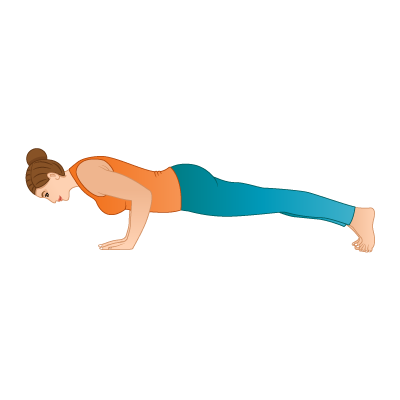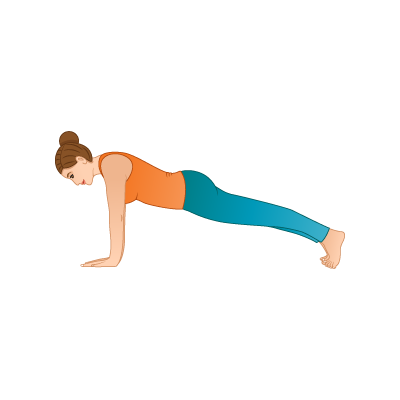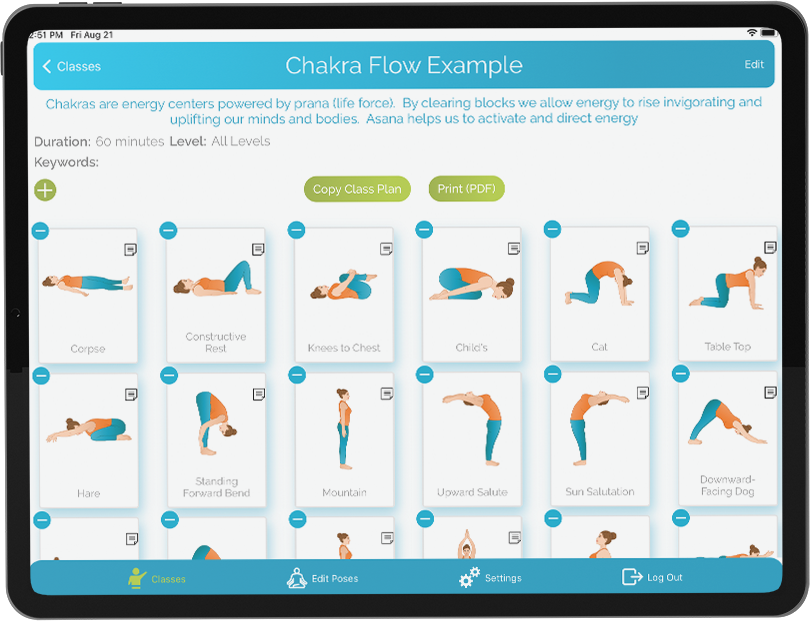5 Yoga Class Theme ideas from everyday life
July 12, 2017 | 8 min read
In the words of Sri Pattabhi Jois, “Yoga is 99 percent practice and 1 percent theory”. As a yoga teacher, you will know that a well-planned sequence is essential to your students’ safe practice of their asanas. Of course, when you consider that the term “yoga” comes from the Sanskrit root yuj which means “to join” or “to yoke” mind and body”, that 1% theory, would appear to be an important component. Yoga Class themes are the most commonly used method by yoga teachers to infuse their classes with purpose. The challenge for us all is how to do it well.
For a Yoga class theme to be effective, it must go deep into the heart of each student in the class. If you are teaching private clients, you will be able to customise each lesson around personal goals or intentions. As these may differ among individuals in an all levels or drop-in session, you will want to find that Yoga class themes that are both accessible to the group but can be deeply felt by each individual student. Below are five suggestions taken from my own life and practice as a yogi and teacher to get you started.
Yoga Class Theme: Embracing Change
As human beings, we are pretty complex organisms, built to develop, grow and adapt to any circumstances. Most of the time, however, we resist change, even when it is something we ourselves have initiated such as moving house or getting a job promotion. According to yoga philosophy, we are constantly and continually changing in each moment of every day, through the law of karma. Our responses to these changes may not turn us into a toad in the next life, but they will leave an imprint on our consciousness.
Begin the class by asking students to reflect on changes in their own life. From there you might offer some mindfulness practice, suggesting students check in with their body and spirit, noticing any tensions, thoughts, physical sensations before moving on to a sequence of heart opening poses. If you normally teach a fast-paced flow, try slowing it down a bit, reminding them in each pose to check in and be present and aware of each sensation as it arises. Try to bring their attention to the subtle changes taking place in the body with each movement and transition from shape to shape. Allow five minutes at the end of the class to share some thoughts with the class about the experience.
Motivational Quote: “We must be willing to let go of the life we planned so as to have the life that is waiting for us.” – Joseph Campbell
Yoga Class Theme: Expressing Gratitude
Gratitude is the hallmark of a healthy mind and spirit. Being thankful for what is good in our lives; instead of focusing on what is wrong is the key to gracious living. The word grace, in fact, comes from the Latin word gratus, meaning thank-you. This concept, simple as it is, can be challenging. We all lead such busy lives; grace is often elusive, lost in the rush hour traffic or an unkind word. To cultivate grace and foster gratitude in your classes, begin with an anatomical focus such as giving thanks for our legs.
For this class, you might plan a sequence around standing poses and balances, using verbal cues and visualisations to support intentions. You might for examples transition to standing forward bend by suggesting your students bend forward and kiss their knees. In tree, pose spend some time on the wonder of legs, their grace, beauty and resolve. This provides a smooth transition to dancer, one of the most graceful of yoga asanas. Close the class by reminding students to be thankful for the legs that allow us to stand, walk, run and jump. You might end with a leap in the air and high fives all around. Alternatively, you might invite your students to participate in a random act of kindness to celebrate their gratitude for yoga.
Motivational Quote: “Every thought you produce, anything you say, any action you do, it bears your signature.”– Thich Nhat Hanh, Buddhist monk
Yoga Class Theme: Playing the Edge
Playing the edge is all about having a healthy ambition in life, in order to achieve your personal best. In yoga, this same concept applies to our practice of asanas. Without pushing too hard, for example, you might encourage your students to explore the point beyond where they feel the first stretch, taking each pose a little deeper. “Playing the Edge” helps us to move beyond the comfort zone, adventuring beyond our perceived limitations.
This theme can be woven into almost any sequence. The work is the subtle movements and sensations that bring awareness without pain. To support your students understanding of the difference between playing the edge and pushing beyond it, begin with some pranayama to still the mind and calm the body. Spend the warm-up on some stretching poses, giving lots of verbal cues to synchronise breath and movement. For example, inhale into the stretch, exhale with the release. Next try repeating the same movement, asking them to inhale for a little longer and exhale fully. Plan the sequence around a peak pose such as handstand or encourage each group member to try a new pose or a variation of a favourite pose.
Motivational Quote: Our deepest fear is not that we are inadequate. Our deepest fear is that we are powerful beyond measure. It is our light, not our darkness, that most frighten us. You’re playing small does not serve the world. Marianne Williamson
Yoga Class Theme: Practicing non-attachment
Non-attachment (vairagya) is one of the core principles of yoga, outlined in the Yoga Sutras by Patanjali. Patanjali understanding of the yoga is the point at which we are able to stop identifying with our thoughts and be able to see the true reality. To reach that state of enlightenment requires a dispassionate self, one that does not identify with any pre-conceived definitions of the self. To do requires practice (abhyasa) in not making judgements about ourselves.
To plan a sequence on this theme, build in a lot of scaffolding poses. This will allow your students to practice non-attachment in a “low stakes” pose such as cobblers or low squat before moving on to a peak pose sequence such as crow pose, side crow and eight-limbed pose. Throughout the transitions, encourage your students to practice non-attachment, exploring new poses without judgement. Try using playful language, such as “play the edge” or “when the going gets tough, the tough get curious” to discourage critical thoughts. Remind students to breathe as they move into and fall out of postures. Most importantly, to relax the mind, use humour and let the laughter flow.
Motivational Quote: “Your present circumstances don’t determine where you can go, they merely determine where you start.”– Nido Qubien
Yoga Class Theme: Be yourself Yoga
Being yourself is the-hardest-yoga-pose of them all. Think about it. To be ourselves is to be enlightened. According to The Bhagavad Ghita, a happy or enlightened person follows their own Dharma (true calling), “one cannot keep himself on the spiritual path if he abandons the duties born of his true nature. One’s own duty, performed imperfectly, is better than doing another’s duty perfectly.”(BG 3.35) So to honour ourselves, to truly be authentic, we must find our way or purpose without attachment to who we think we are or want to be.
To promote self-realization and empowerment in this themed class, plan your sequence around the warrior poses. Standing poses such as Warrior I teaching grounding, providing a firm foundation for exploring the full potential of the self. Warrior II, on the other hand, provides opportunities for celebrating the unique qualities of the self, with a focus on the gaze (drishti) to empower. Alternatively, you might invite your students to personalise their asanas with suggestions for variations or modifications, such as the funky tree (eagle arms with tree pose) or stick-em-up arms and warrior legs. Offering your students a chance to play with the poses will ignite a sense of freedom that leads to personal growth.
Motivational Quotes:“Yoga is the practice of tolerating the consequences of being yourself.” Bhagavad Gita
“Yoga is the journey of the self. Through the self. To the self.”– The Bhagavad Gita
“The privilege of a lifetime is to become who you truly are.”– Carl Jung
“To be yourself in a world that is constantly trying to make you someone else is the greatest accomplishment.”– Ralph Waldo Emerson
If all else fails, yoga teacher, lead with your heart. Talk to your students about what inspires you to practice yoga and why. If you have a favourite, story, quote, asana share it with your class, then build a class around it. Passion is always inspirational, especially when it comes to yoga.
Looking for more inspiration for your next yoga class? YogaClassPlan sequence builder gives you access to 7000+ shared class plans in your hands. You can create your own completely new class sequences by choosing from 500+ pose illustrations. Simply drag and drop poses to create your routine, add class plan details such as duration and level, and share the class plan with your students. Sign-up for a 15-day YogaClassPlan free trial today.
Brenda Hamlet is an RYT 200 yoga teacher and journalist. More information about Brenda can be found at https://www.facebook.com/brendahamletyoga
Posted in Health & Wellness, Teaching Resources, Teaching Tips




